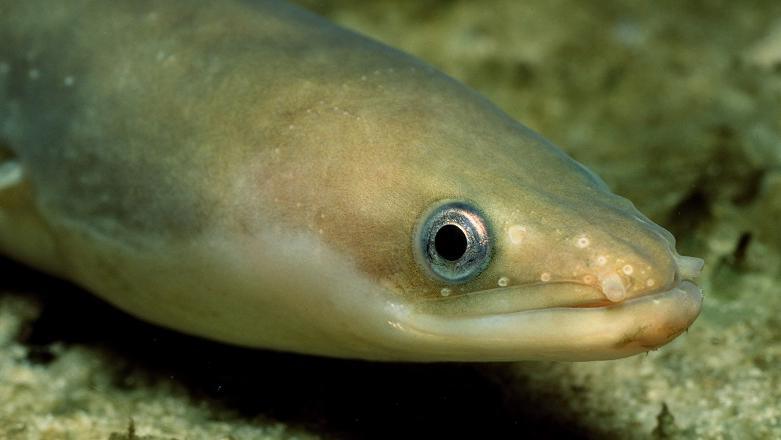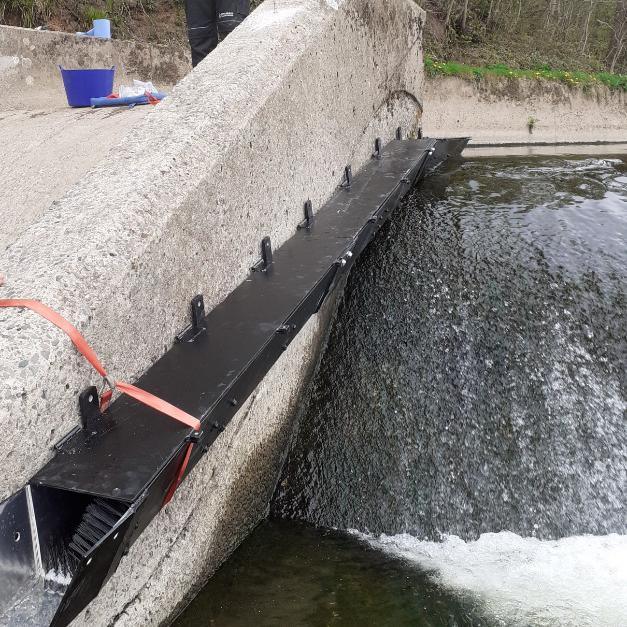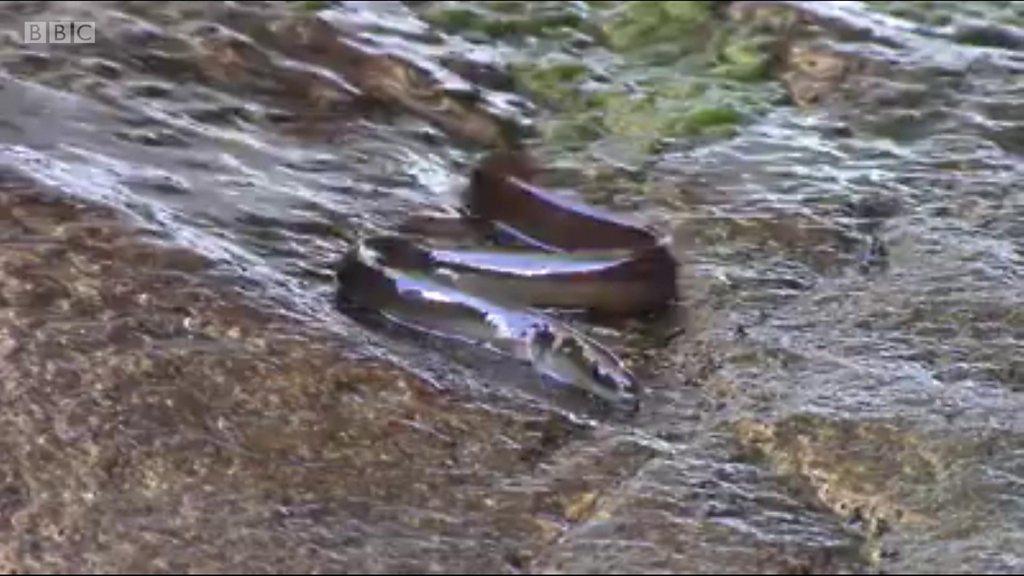Endangered eels enjoy improved river access

The European eel is considered to be critically endangered
At a glance
The European eel is considered critically endangered by the International Union for the Conservation of Nature
A weir built to supply water to a nuclear plant in southern Scotland formed a barrier to its movement
A new pass should allow access to hundreds of miles of additional waterways
- Published
Endangered eels have had their access opened up to lengthy new stretches of waterways in the south of Scotland.
A new "eel pass" has been put in place over the Milnby Weir to allow them to get into the upper reaches of the River Annan and its tributaries.
The European eel is considered critically endangered on the International Union for the Conservation of Nature's red list., external
Global numbers are said to have declined by about 90% since the 1970s but it is hoped the £40,000 project can help to boost numbers in Dumfries and Galloway.
The weir was first built in the 1950s to provide water for the nearby Chapelcross nuclear power station and formed a barrier for the eel and other species like the lamprey.

The new eel pass will allow access to the upper reaches of the River Annan and its tributaries
The atomic plant ceased power generation in 2004 and its cooling towers were demolished in 2007 with the lengthy decommissioning process ongoing.
Now a joint project involving the Nuclear Decommissioning Authority, Magnox Ltd, Scottish Environment Protection Agency and Scottish Water aims to improve the eco-system in the area with the eel pass part of that effort.
It is hoped it can upgrade the majority of the catchment from "poor" to "good" ecological status.
Euan Innes, Scottish Water asset planner, said it was delighted to help the "globally rare and declining species" get access to more of the River Annan.
Chapelcross site director Richard Murray said the project was an "excellent example" of how it could improve the environment in which it operates.
Related topics
- Published2 July 2018

- Published5 September 2019
